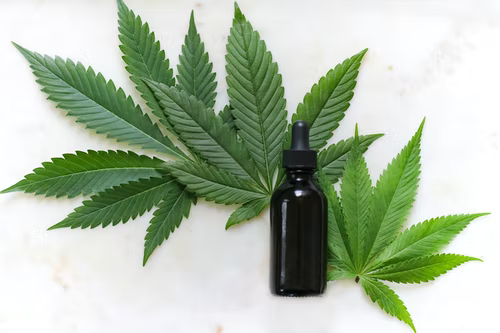 Just a few years ago, most people thought that CBD was just a passing fad. But, as the use of this cannabis-derived compound has become legal in all 50 states, healthcare advocates, researchers, and providers believe it’s here to stay. Keep reading as women’s healthcare author and hormone compounding pharmacist Marla Ahlgrimm (retired), shares a few facts about CBD.
Just a few years ago, most people thought that CBD was just a passing fad. But, as the use of this cannabis-derived compound has become legal in all 50 states, healthcare advocates, researchers, and providers believe it’s here to stay. Keep reading as women’s healthcare author and hormone compounding pharmacist Marla Ahlgrimm (retired), shares a few facts about CBD.
Q: What is CBD?
Marla Ahlgrimm: CBD is a non-psychoactive compound found in the cannabis plant. Unlike THC, CBVD does not induce intoxication.
Q: How do CBD and THC affect the body differently?
Marla Ahlgrimm: THC binds to CB1 and CB2 receptors. CBD stimulates them. The difference is quite important as binding produces the “high” many people report when smoking or consuming THC-rich products. Stimulation of these nerve receptors may have a positive effect on some individuals. For example, some studies have found that activating/stimulating CB2 receptors can help the brain purge certain types of protein that forms plaque on the brains of people with Alzheimer’s disease.
Q: Is CBD safe?
 Marla Ahlgrimm: CBD is largely considered safe, and the World Health Organization explains that it is tolerable by the vast majority of humans. Further, the FDA has approved CBD for use in certain clinical treatments as part of the therapeutic regimen for seizure disorders. Of course, anyone considering adding CBD as a supplement to their daily routine should contact their healthcare provider for personalized insight.
Marla Ahlgrimm: CBD is largely considered safe, and the World Health Organization explains that it is tolerable by the vast majority of humans. Further, the FDA has approved CBD for use in certain clinical treatments as part of the therapeutic regimen for seizure disorders. Of course, anyone considering adding CBD as a supplement to their daily routine should contact their healthcare provider for personalized insight.
Q: How does CBD help with seizures?
Marla Ahlgrimm: It all comes back to the same nerve receptors that CBD activates. Just as importantly, John Hopkins University explains that some people who take CBD may be able to better tolerate their seizure medication. A study by the University also found that some individuals who took CBD while taking seizure disorder medication also had lower instances of depression and anxiety.









 Menopause is a naturally occurring event that happens to all women. According to
Menopause is a naturally occurring event that happens to all women. According to 


 Marla Ahlgrimm: First and foremost, be selective about your partner. Ideally, you only have intercourse with one partner at a time, and it does not matter if you have sex with a man or a woman, this rule of thumb still applies. Further, be careful of the lubricants that you use, and avoid products that are scented, flavored, or contain dyes.
Marla Ahlgrimm: First and foremost, be selective about your partner. Ideally, you only have intercourse with one partner at a time, and it does not matter if you have sex with a man or a woman, this rule of thumb still applies. Further, be careful of the lubricants that you use, and avoid products that are scented, flavored, or contain dyes.
 Marla Ahlgrimm:
Marla Ahlgrimm: 





 Marla Ahlgrimm has co-authored two ground-breaking books,
Marla Ahlgrimm has co-authored two ground-breaking books,